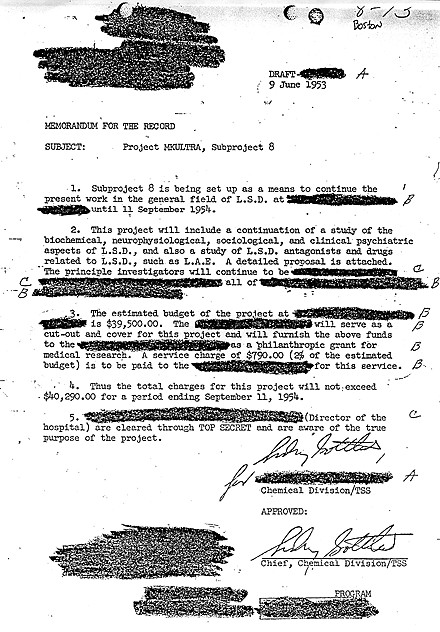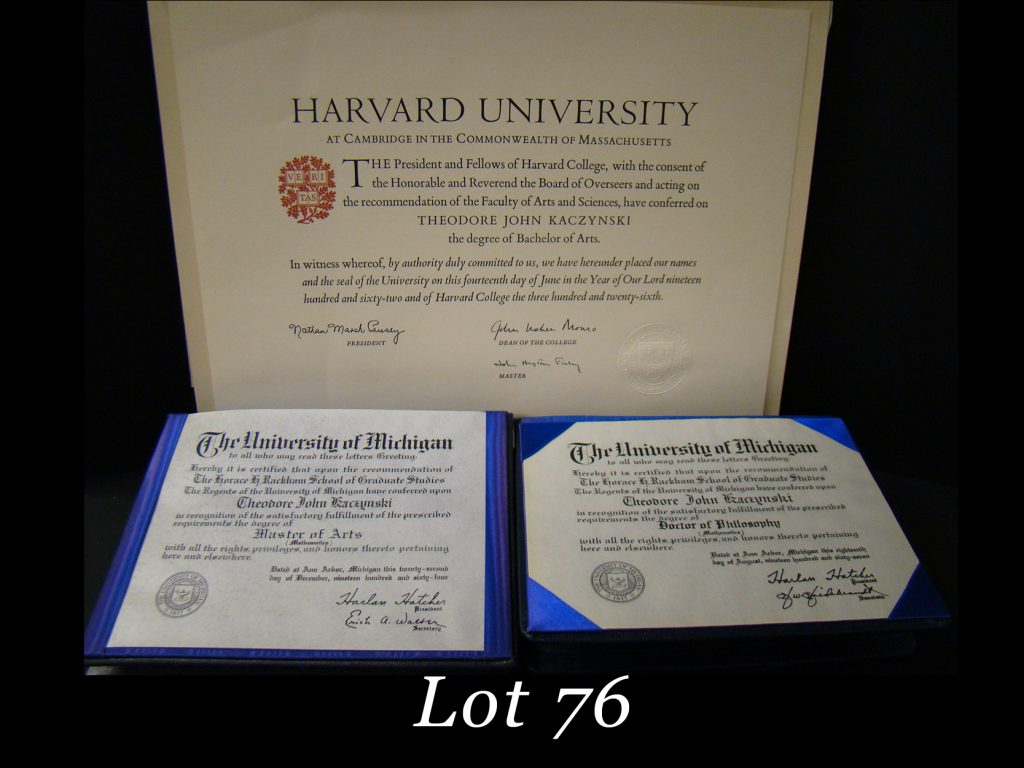In recent years, psychedelics have gained much positive traction across the globe. In 2021, the first psychedelic therapy clinic in Britain opened its doors with the aim of treating mental health disorders, such as OCD. Since then, various research institutions have applied psychedelics to a range of indications, including alcohol-use disorder, anorexia and PTSD.
In general, other than taking the correct dose, there are two key components to an interaction with any psychoactive substance, set (your mood, beliefs, values, etc.) and setting (anything external including people, music, weather, etc.). Get both of these right and you’re probably in for a great time!
However, it’s easy to forget the instances where psychedelics have been used in a less than favourable light, and often by people or agencies in positions of authority. These stories have often been used to stereotype and stigmatise people who use psychedelic drugs, and have overshadowed their great therapeutic potential. Despite this, what the following case studies do show is the powerful nature of these drugs – something that has been historically harnessed for both good and bad.
From conspiracies, to cults, to political extremism, Volteface presents a dive into the ‘dark side’ of psychedelics…
MK-Ultra
Of course, any article on this topic would be incomplete without mentioning MK-Ultra – perhaps the most infamous instance of psychedelics being used for bad, rather than good. The project was founded by the CIA in 1953, in the midst of the Cold War, in response to the fear that American prisoners of war (POWs) were being turned into ‘communist allies’. According to the CIA, this was enough evidence to prove that prisoners had been manipulated or hypnotised, and so the agency decided to allocate millions of dollars into studying the art of mind control in the hopes of weaponizing this against communist forces.

Sidney Gottlieb approved of an MKUltra sub-project on LSD in this June 9, 1953, letter.
A key part of the research process was testing psychedelic drugs, such as LSD, in the hopes that confessions or secrets would be revealed, or a subject’s mind could be wiped and reprogrammed. When the project began in April 1953, experiments saw LSD administered to the likes of prisoners, drug addicts and prostitutes – as Sidney Gottlieb (the chemist who introduced LSD to the CIA) put it: “people who could not fight back”.
The psychedelic drug was also given to military personnel, doctors, government officials and CIA agents. More often than not subject’s were unaware they had been given LSD and informed consent was rarely gained. Those in the military were threatened with court-martials to prevent them from speaking out against the experiments.
It is important to note that MK-Ultra isn’t just one singular project. It’s estimated that at least 162 secret projects conducted at roughly 80 separate institutions can be attributed to its name. One of the most infamous sub-projects associated with MK-Ultra was Operation Midnight Climax, and it’s exactly what it says on the tin. In this series of experiments, CIA operatives hired prostitutes in San Francisco to lure unsuspecting men back to brothels set up by the agency. Once there the men were drugged with LSD, and their interactions with the women were watched and recorded by agents through a two-way mirror. The experiments were designed to explore what information the men would reveal when unknowingly dosed with LSD. However, in practice evidence was inconclusive, and so the Operation has been regarded as an embarrassment and a failure.
Moreover, the events of MK-Ultra weren’t merely confined to the US. Trials were also conducted in Canada by English psychiatrist Dr. Donald Ewen Cameron at the Allan Memorial Institute. Dr. Cameron’s previous research focus was schizophrenia, which he believed could be cured via a process called ‘depatterning’ – erasing an individual’s memories and returning them to a childlike state. The individual was then rebuilt using ‘psychic driving’, a procedure that involved patients being immobilised and sedated and forced to listen to taped messages on a loop for up to 16 hours a day.
Dr. Cameron applied the same processes to the MK-Ultra experiments. Trials often involved individuals at the hospital being placed into drug-induced comas, being given LSD or being subjected to intense electroshock therapy, sometimes these were used in conjunction with one another.
MK-Ultra was halted in the 1970s, with many of its records destroyed in 1973. In 1974, the New York Times reported that the CIA had conducted an illegal domestic intelligence operation during the Nixon administration. This prompted investigations by the US Congress and Rockefeller Commission.
These institutions revealed to the public in the summer of 1975 that such experiments were conducted by the CIA. Their reports also confirmed that at least one individual, Frank Olson, had died as a result of being given LSD. Some of those that survived the experiments remain affected to this day. Many report experiencing amnesia and had to relearn skills they had before the experiment. Patients’ families reported that they were more unstable than before the treatments began. To this day, neither the CIA nor Canadian Government have apologised for the events of MK-Ultra.
Cults
Psychedelic drugs have also had their fair share of ties to various cults over the decades, and even in more recent years. Perhaps the most well known instance of psychedelic use by a cult has to be the Manson ‘Family’.
The group consisted of around 100 followers based in California in the late 60s/early 70s, led by Charles Manson, a man who spent most of his life incarcerated. The group were involved in a range of illegal and disturbing activities including theft, assault and bizarre sexual rituals. Infamously, in 1969 the Manson Family carried out 9 murders across Los Angeles, including the murder of actress Sharon Tate, who was 8 and a half months pregnant at the time.
It’s no secret that the Manson family, made up of teenagers and young women who had left home and were considered ‘hippies’, were often under the influence of psychedelic drugs. It’s believed Manson would often dose his followers with LSD before his lectures on the coming ‘race war’, using it as a tool to guide the thoughts of the ‘Family’.
However, until recently little was known about key events that might have contributed to the rise of Charles Manson. In 1999, freelance journalist Tom O’Neill set about writing an article on the Manson’s Family impact on Hollywood, 30 years on from the Tate-LaBianca murders. After stumbling on a fresh and even more interesting angle, O’Neill eventually released a book 20 years later titled ‘Chaos: Charles Manson, the CIA, and the Secret History of the Sixties’.
Interestingly, O’Neill noted that prior to the murders Manson’s parole was never revoked, despite being arrested multiple times. After moving from Los Angeles to San Francisco, O’Neill turned his attention to Manson’s parole officer Roger Smith – a doctoral criminology student who was part of the CIA’s research with LSD, otherwise known as MK-Ultra. It has since been confirmed that Manson was a subject in at least two of the trials associated with the project, which O’Neill asserts not only contributed to Charles Manson as we know him, but also provided him with the techniques to brainwash his followers into unshakeable obedience.
Terrorism
Moving swiftly on, it might surprise you to find out that psychedelics have also been linked with a number of terrorist incidents, most notably the Unabomber (otherwise known as Ted Kaczynski). Kaczynski was responsible for a string of homemade bomb attacks from 1976-1995, that left 3 dead and 11 wounded.
Although Kaczynski’s motives for the attacks are said to be in protest against technological progress, some also believe that experiments that took place at Harvard University, where he began his studies at 15 years old, were also responsible for the events that followed. In the early noughties, historian Alston Chase revealed how Kaczynski had been taking part in studies linked to the CIA’s project MK-Ultra for around 3 years.

Kaczynski’s diplomas from Harvard University and the University of Michigan
According to Chase, the studies conducted at Harvard explored stressful interpersonal relationships, akin to mock interrogations. One of the studies carried out by Henry A. Murray, on 22 of his undergraduates, required the subject to debate their philosophy of life with another student, who was, in fact, a lawyer. The participant was escorted to a brightly lit room and placed in front of a mirror. A camera was used to track facial expressions and electrodes recorded heart and respiratory rates.
As instructed, the subject attempted to debate their philosophy of life, but found this incredibly frustrating against their more sophisticated opponent. Participants found this frustration boiled over into real anger, one described the experience as similar to being strapped in an electric chair. For many participants the study was highly traumatic. There is evidence to suggest that students were unknowingly dosed with LSD during the experiments, and so this served to exacerbate both uncomfortable emotions and sensations.
It is alleged that taking part in these experiments may have contributed to Kaczynski’s philosophical outlook, which ultimately played a part in the Unabomber attacks. Whether this is accurate, we may never know.
More recently in 2019, VICE reported on the arrest of someone they dubbed a ‘psychedelic Nazi’. Andrew Jon Thomasberg of Virginia was arrested after the FBI tapped text conversations between himself and another associate identified as ‘B.B.’.
In the conversations Thomasberg consistently made reference to his weapons and expressed far-right extremist sympathies. In one instance he stated he had enough ‘gear and supplies to set the new high score’, a phrase often used by far-right extremists when explaining how many they would kill in a mass shooting. From these conversations, the FBI were able to determine that Thomasberg was a part of Atomwaffen, a neo-Nazi group formed in the US in 2015.
The FBI also intercepted communications that consistently made reference to the use of psychedelics, specifically LSD and shrooms. In one exchange Thomasberg stated he felt the need to start tripping again, but that he would space it out more, implying her had previously used LSD on a regular basis, and claimed, “there’s nothing more aryan than ethneogenic drug use”. Later conversations revealed extensive chats about buying LSD on the darkweb.
A quick closing note
Having only scratched the surface of a plethora of case studies that showcase the dark side of psychedelics, I feel it important to highlight that these stories contribute to a history that has tainted, stigmatised and demonised these drugs. In many ways, incidents such as these have given psychedelics a bad name for a long time, and have ignored their amazing therapeutic potential. Therefore, it is important that we continue to explore the ever-growing range of positive applications these substances can have. By examining the potential ‘dark side’ of these drugs and learning from situations like those described above, we may be able to protect against their potential harms, as well as find out more about their potential to do good.
This piece was written by Volteface Content and Media Officer Megan Townsend. She is particularly interested in the reform of drug legislation, subcultural drug use and harm reduction initiatives. She also has an MA in Criminology from Birmingham City University. Tweets @megant2799.
